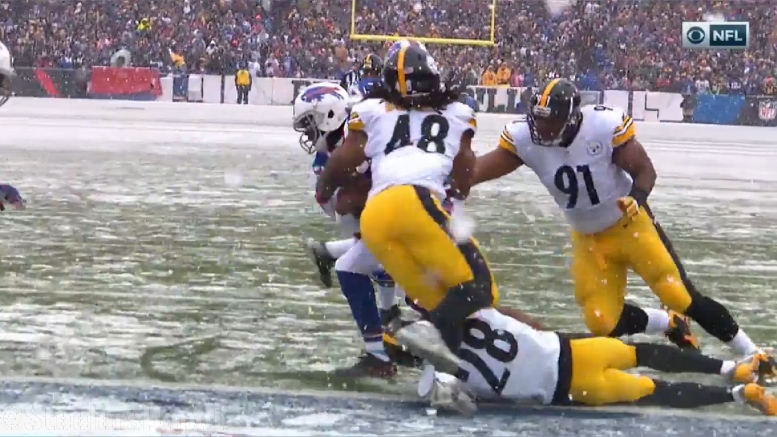When it comes to playing the pass, I think it’s generally understood at this point that sacks do not define the job, even if it might be the main objective. You are not going to get a sack every time that the quarterback drops back in the pocket to throw a pass, but you can still be effective by putting pressure on him.
This is what the Pittsburgh Steelers are looking to improve upon the most. They were one of the top teams in the league in sacks in 2015, and after they figured out how to blitz again, they had the most sacks over the course of the final seven games of the regular season last year. But their pressure on the quarterback was not consistent.
That is why I found a statistic from Pro Football Focus so interesting, and worth passing along, that helps illustrate just out important consistent pressure is. It is more valuable to pressure the quarterback on, say, once every three throws in a game than it is to bring him down twice in a game.
To quote Sam Monson:
Sacks are important, but they represent an extremely small percentage of passing plays. Simply applying pressure to quarterbacks this past season dropped their passer rating from 96.7 to just 62.5 (league-wide averages), or the equivalent of turning Derek Carr into Jared Goff. Players that generate a lot of pressure are having a huge impact on the game, whether they get home or not, and those that generate comparatively little pressure won’t necessarily be saved by a high sack total.
This is why Bud Dupree’s numbers are somewhat misleading. He finished the regular season with four and a half sacks in the last five games, but he hardly generated any pressure outside of those five plays. James Harrison only registered five sacks during the regular season, but his pressure while he was on the field was the closest thing to consistency that the Steelers had.
In fact, Harrison was listed 11 on the list in question, which highlights the 15 best edge rushers during the 2016 season. Not that this article is about Harrison per se, nor the list, but Monson writes that “the play of James Harrison at age 38 is one of the stories of the season”, continuing to note that he generated 35 total pressures including the playoffs during the year.
It’s nice for the Steelers to have a rusher like Dupree who can make things happen from time to time with his natural traits for a sack or two here and there, but they need him to be a player who can collapse the pocket and make the quarterback uncomfortable consistently.
I don’t think I can understate how much of a difference it is to drop from a quarterback rating of 96.7 to 62.5. I suppose the Carr to Goff analogy will do. Carr averaged seven yards per attempt and threw 28 touchdowns to six interceptions. Goff averaged 5.3 yards per attempt with a five-to-seven touchdown-to-interception ratio.








